Background Intro
Welcome to our wig care guide! Whether you're a seasoned wig enthusiast or a newbie exploring the world of versatile hairpieces, this blog is your go-to source for maintaining your hat fall wig with finesse. We'll unravel the secrets to preserving that flawless appearance, from storage tricks to cleaning rituals. Get ready to unlock the beauty potential of your wig!
What are the Common Materials Used to Make Hats Fall wigs?
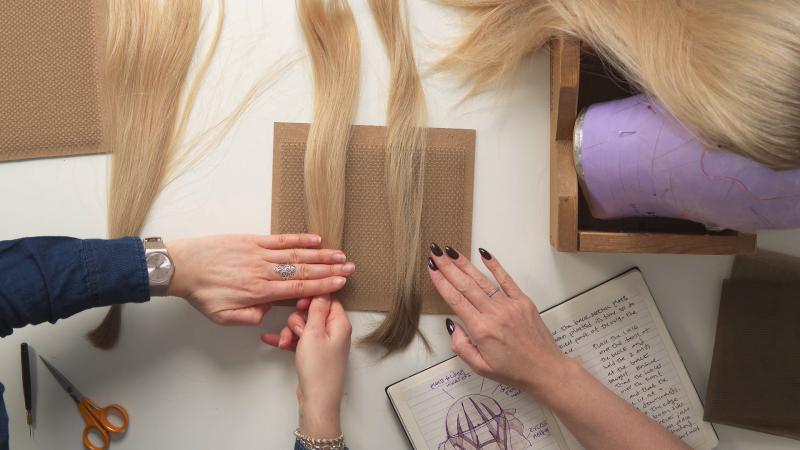
Hat fall wigs come in various materials and constructions. Some opt for premium wigs crafted from real human hair, offering an incredibly realistic appearance and the flexibility to style them just like one's natural hair. Conversely, synthetic hair is a popular choice due to its affordability and versatility; it can withstand some heat styling but may not replicate the natural look of human hair. These wigs often rest on a fine mesh or net base, ensuring a comfortable and secure fit on the wearer's head. Additionally, many hat fall wigs incorporate an adjustable elastic band that encircles the head, enhancing stability and providing a snug fit for added comfort.
How Long does a Hat Fall Wig Last?

The lifespan of a Hat Fall Wig varies based on factors like quality, frequency of use, maintenance, styling, and environmental conditions. Higher-quality wigs made from synthetic hair or human hair generally last longer than lower ones, with synthetic wigs being less durable than human hair wigs. Proper care, including regular cleaning, gentle styling, and correct storage, can significantly extend a wig's life. Excessive heat styling and exposure to harsh elements should be avoided to prevent damage. Use some wig care products can extend the life of your wig. In general, a well-maintained Hat Fall Wig can endure from a few months to over a year, but it's important to note that wigs aren't permanent and will eventually wear out.
How to Maintain Hat Fall Wigs for Lasting Beauty?
The key to proper wig care is using the right techniques and the right products. A consistent skincare routine, along with a healthy lifestyle, can help you look and feel your best for years to come. Here are some tricks you can follow to keep your hat fall wig in excellent shape.
Tip #1 Prepare Essential Tools and Products
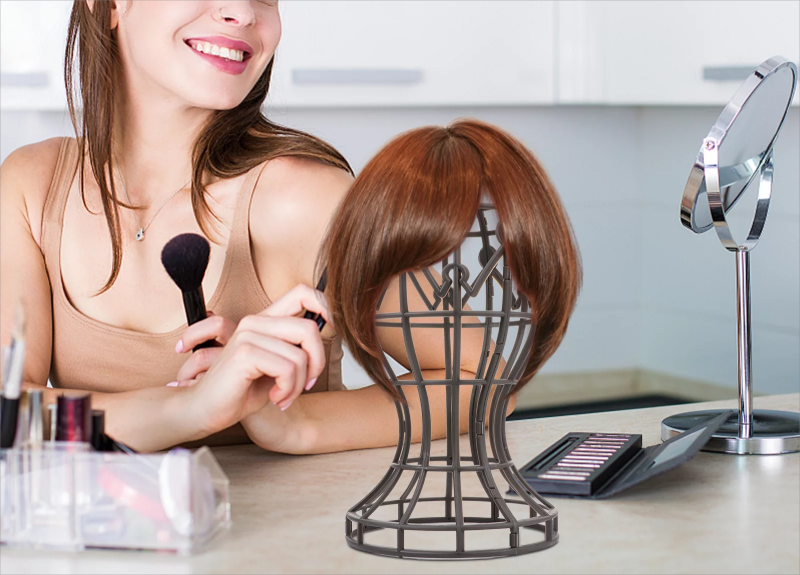
► Wig Head and Brush
A wig head and the right brush are essential for keeping your wig in good shape. The head helps stay its form, prevents tangles, and makes styling easier. The right brush, made for wigs, detangles gently, extending the wig's life. These tools simplify care, save money, promote hygiene, and protect the wig during travel.
► Wig-Specific Shampoo and Conditioner
Wig-specific shampoo and conditioner are crucial because they cater to various hair types and issues, ensuring healthy and attractive hair. Taking good care of your wig can effectively extend its lifespan.
Related: How To Create The Flawless Hair Care Regimen For Your Hair Type?
► Heat Protectant Spray
Using wig care products designed specifically for wigs makes all the difference. If applying heat to the wig, use a heat protectant spray to prevent the hair from damage. Choose the right one, apply it to the hair, and style with care using recommended temperatures and minimal tension, limiting heat use to maintain wig quality.
Tip #2 Follow Daily Maintenance Routine
► Brushing and Detangling
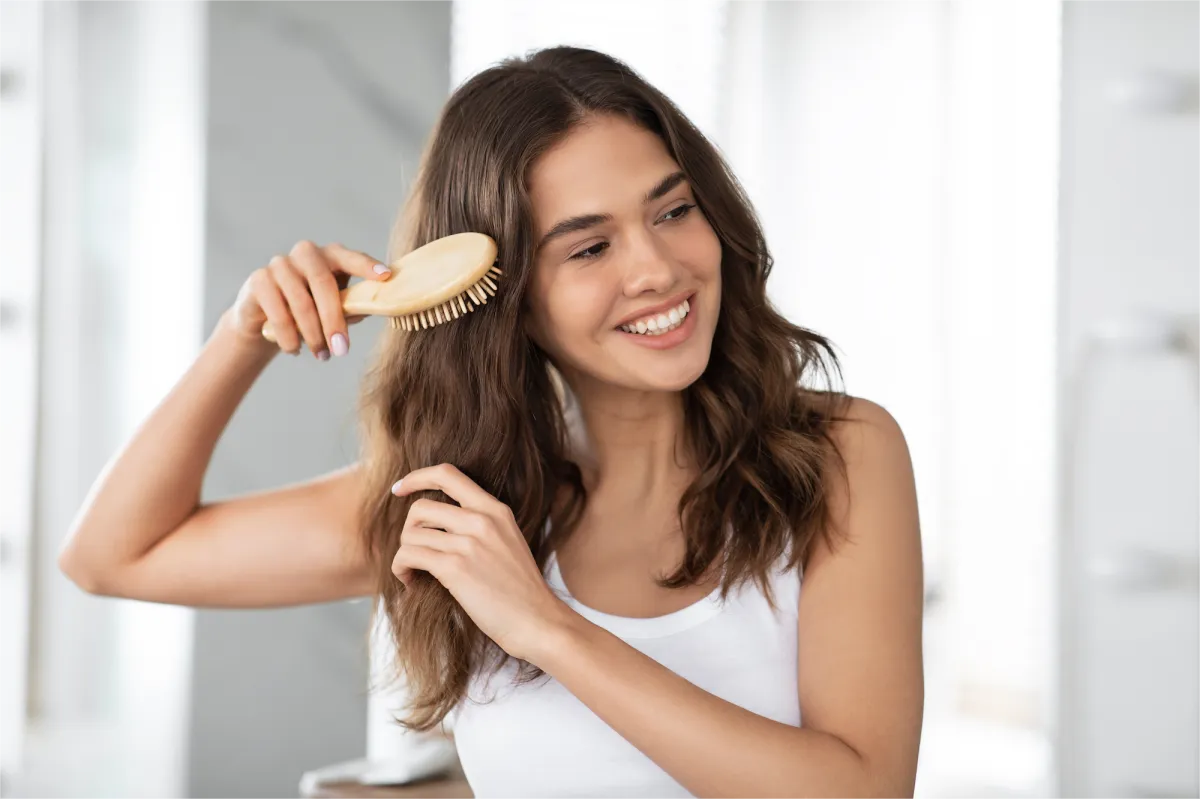
Proper brushing and detangling of hat fall wigs are essential for maintaining its health and preventing damage. Here are step-by-step instructions:
-
Gather the Necessary Tools. Before you begin, ensure you have the right tools: a wide tooth comb or a hairbrush designed for your wig type, and a detangling spray or conditioner if needed.
-
Start with Dry Hair. Brushing wet hair can cause breakage, so it's best to start with dry hair. If your wig is wet, use a wide-toothed comb to detangle it gently.
-
Divide Wig Hair. Divide wig hair into sections if it's thick or long. This makes the process more manageable and prevents excessive pulling and tugging.
-
Detangle Knots. Begin by holding a small section of hair at the tips with one hand to support it. With the other hand, start at the ends and gently work your way upward, detangling any knots or tangles. Always work from the ends toward the roots to minimize damage.
-
Use Short Strokes. Use short, gentle strokes when brushing or combing your wig. Avoid yanking or pulling, especially if you encounter stubborn knots.
-
Hold Wig Above the Knot. If you encounter a particularly stubborn knot, hold the wig above the knot with one hand to reduce tension and gently work the knot out with the brush or comb using your other hand.
-
Be Patient. Take your time when brushing wig hair. Rushing can lead to breakage and damage.
Related: Hair Damage: What Causes It And How To Deal With It
-
Gradually Move Upwards. Once a section is detangled from the tips to the mid-length, move up a bit and repeat the process until you've worked your way up to the roots.
-
Repeat for Each Section. Continue this process for each section of wig hair until your entire head is detangled and brushed.
-
Style as Desired. Once your wig is detangled, you can style it as desired. If you're using heat styling tools, apply a heat protectant before styling to minimize damage.
-
Clean Your Brush or Comb. After use, clean your fingers or wide tooth comb regularly to remove hair and debris, ensuring they remain effective and hygienic.
Remember, patience and gentleness are key when detangling and brushing your hat fall wig. Proper care can help maintain its health, prevent damage, and keep it looking its best.
► Washing and Conditioning
Cleaning a wig is essential for maintaining its
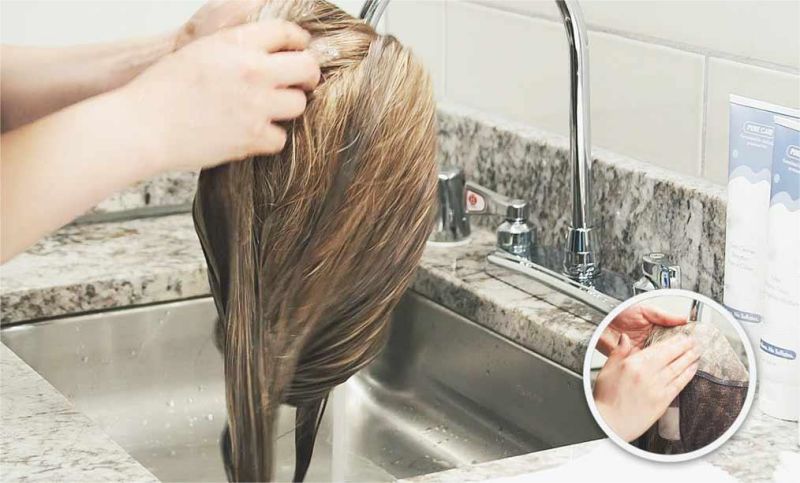
appearance and hygiene. Here's a step-by-step process for cleaning a wig:
-
Gather Your Supplies. You will need a wig stand or a mannequin head, a wide-toothed comb or wig brush, a basin or sink, lukewarm water, a wig shampoo or mild regular shampoo(such us sulfate free shampoo), a wig conditioner, and a clean towel.
-
Detangle the Wig. Place the wig on a mannequin head. Use a wide-toothed comb or wig brush to gently detangle any knots or tangles, starting from the tips and working your way up to the roots. Be gentle to avoid damaging the wig fibers.
-
Prepare the Cleaning Solution. Fill a basin or sink with lukewarm or cool water. Avoid using hot water, as it can damage synthetic wigs. Add a small amount of wig shampoo or mild regular shampoo to the water and mix it gently.
-
Soak the Wig. Submerge the wig into the soapy water, ensuring it's fully immersed. Gently swish the wig in the water for a few minutes to allow the shampoo to clean the fibers. Avoid rubbing or scrubbing, as this can cause tangling or damage.
-
Rinse Thoroughly. Drain the soapy water and rinse the wig with lukewarm water until all the shampoo is removed. You can do this by filling the basin or sink with clean water and gently moving the wig in the water. Repeat this process until the water runs clear.
-
Condition the Wig. Apply a wig conditioner to the wig, focusing on the mid-length to the ends. Avoid applying conditioner to the roots, as it can weigh down the wig. Leave the conditioner on for a few minutes to restore moisture and softness.
-
Rinse Again. Rinse the wig thoroughly with lukewarm water to remove the conditioner. Again, repeat the rinsing process until the water runs clear.
-
Gently Pat Dry. Place the clean towel on a flat surface and gently place the wig on it. Pat the wig dry to remove excess water. Avoid wringing or twisting the wig, as this can damage the fibers.
-
Air Dry. Place the wig back on the wig head to air dry. Avoid using heat sources like hairdryers, as they can damage a synthetic wig. Allow the wig to dry completely before styling or wearing it.
Regularly cleaning your wig following this process will help keep it fresh, clean, and looking its best for an extended period.
Related: How to wash human hair toppers?
► Styling and Heat Management
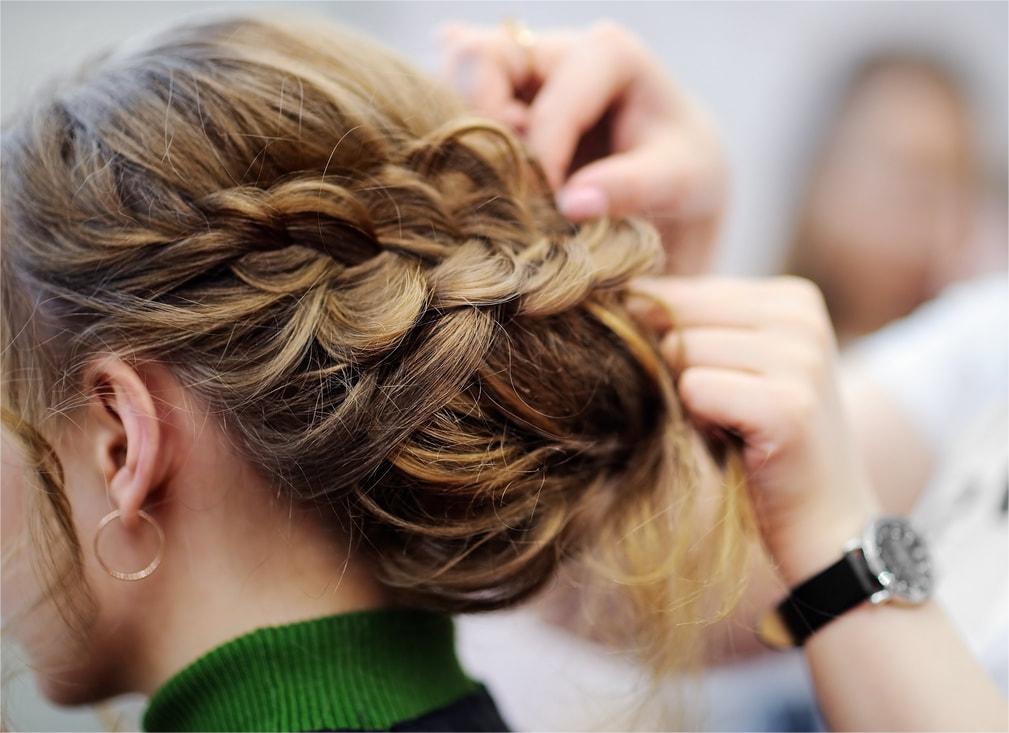
Styling and managing heat tools for a hat fall wig require special care to ensure the wig's longevity and appearance. Here are some tips for safely styling wigs with heat tools:
-
Choose Heat-Friendly Wigs. Since synthetic wigs aren't made from real hair, they typically cannot withstand heat styling. Look for labels indicating they are heat-resistant or heat-friendly. Human hair wigs can also be heat-styled but require different care.
-
Test the Wig's Heat Tolerance. Before using heat tools, do a heat tolerance test on a small, inconspicuous section of the wig. Use a low heat setting to ensure the wig can handle the heat without damage.
-
Use Low to Medium Heat Settings. When styling a wig, stick to low to medium heat settings on your heat tools(such us curling iron and blow dryer). High temperatures can damage synthetic hair or affect the wig's shape.
-
Apply Heat Protectant. Use a heat protectant spray designed for synthetic hair before styling. These wig care products create a protective barrier and minimizes potential damage.
-
Prep and Detangle. Make sure the wig is clean and tangle-free before styling. Use a wide-toothed comb or a wig brush to gently detangle it.
-
Work in Sections. Divide the wig into small, manageable sections for styling. This ensures even heat distribution and helps you achieve your desired look. You can also use a curling wand instead of a curling iron.
-
Avoid Excessive Heat Exposure. Don't leave the heat tool in one spot for too long. Keep it moving to prevent overheating and potential damage to the wig fibers.
-
Cool Down. Allow the styled sections of the wig to chill and set their shape before handling or wearing the wig.
-
Limit Heat Styling. Minimize the use of heat styling tools on your wig. Heat can gradually degrade synthetic hair over time, so reserve heat styling for special occasions.
-
Use Heat-Friendly Styling Accessories. If using accessories like clips or pins, ensure they are heat-resistant and won't melt or damage the wig.
By following these tips, you can safely style and manage your hat fall wig with heat tools while preserving its quality and appearance. Synthetic hair have limitations in terms of heat resistance, so use caution and care during the styling process.
Related: How To Style Your Wig Like A Pro: Step-By-Step Tutorials
How to style human hair toppers?
Tip #3 Store and Organize Properly
► Proper Storage
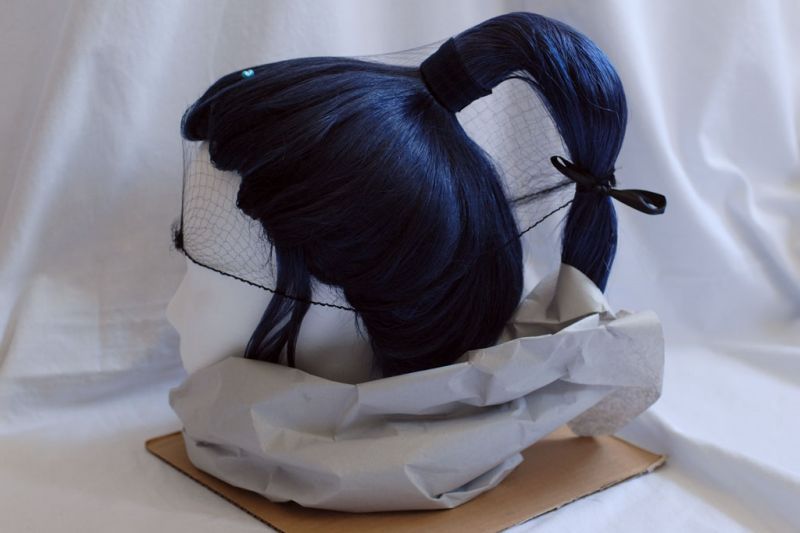
There's a big difference between how you treat a human hair wig and a synthetic wig. But when it comes to wig storage , there is no difference. Here are simple steps to preserve your wig:
-
Clean and Detangle. Before storing, ensure the wig is clean and free from tangles. Use a wide-toothed comb to gently detangle it.
-
Wash if Necessary. If the wig is dirty or has product buildup, wash it following the manufacturer's instructions. Allow it to dry completely before storing.
-
Use a Wig Head. Invest in a wig head and some wig clips . This keeps the wig's style and prevents it from becoming misshapen.
-
Cover with a Wig Cap or Hairnet. Place a wig cap or a hairnet over the wig to protect it from dust, dirt, and potential tangling.
-
Store in a Cool, Dry Place. Keep the wig in a shady, dry area away from direct sunlight and moisture. Excessive heat or humidity can damage the wig over time.
-
Avoid Pressure. Do not place heavy objects on top of the wig, as it can flatten the fibers and alter the wig's shape.
-
Rotate Occasionally. If you plan to store the wig for an extended period, rotate it occasionally on the wig head to prevent creasing and keep it in place.
-
Use the Original Packaging. If you have the original wig packaging, it's a good option for storage. Place the wig in the box, wrap it in tissue paper, and store it in a shady, dry place.
-
Keep Away from Pets. Be cautious if you have pets, as they may be attracted to wigs. Store your wig where it's inaccessible to them.
By following these steps, you can ensure your wig remains in good condition and is ready to wear whenever you need it. Proper storage helps prevent tangling, maintains the wig's style, and extends its lifespan.
Related: How to store hair toppers?
► Travel-Friendly Solutions

Keeping your wig fresh while on the go is essential to maintain its appearance and longevity. Here are some tips to help you with that:
-
Use a Wig Travel Case. Carry a special case to protect your wig.
-
Brush Gently. Bring a good brush to detangle your wig.
-
Avoid Heat and Sun. Keep your wig away from hot places and sunlight.
-
Wig Spray. Use a wig spray to freshen it up.
-
Bring Accessories. Pack extra clips, pins or a bit of wig glue.
-
Wear a Wig Cap. Use a wig cap to protect your hair and wig.
Related: Method 4: Wig Caps
-
Carry Hair Care. Bring shampoo and conditioner if needed.
-
Stay Out of Strong Wind. Wind can mess up your wig, so wear a scarf or hat.
-
Quick Check. Carry a small mirror for quick checks.
-
Plan for Cleaning. If traveling for a while, plan for wig maintenance.
These simple steps will help keep your wig looking good while you're on the move.
Tip #4 Handle Common Issues Correctly
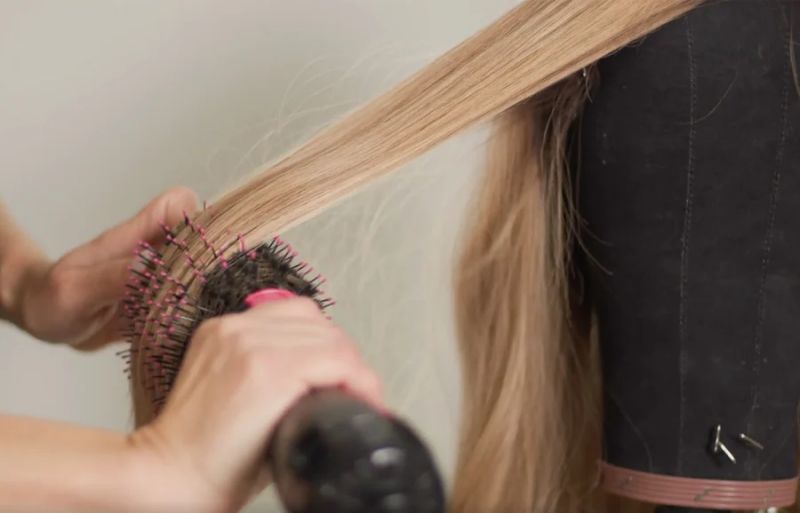
Tailor these hints to your specific wig type and needs, and you'll be able to show off a fresh and stylish look while on the go:
-
Tangling. To prevent tangling, always brush your wig regularly before and after wearing it. Use a wig brush or comb designed for wigs, and start from the tips, working your way up.
-
Shedding. Some shedding is normal, especially with synthetic hair wigs. To minimize shedding, avoid excessive brushing, and handle your wig gently. If shedding becomes excessive, consider using a wig sealer or conditioner.
-
Frizz. Synthetic hair wigs can develop frizz over time. Use a wig-specific conditioner or spray to tame frizz. For human hair, you can apply a small amount of hair serum to control frizz.
-
Losing Shape. Keep your wig on a wig stand or foam head when not in use to help keep it in place. Avoid squishing it in a bag or storing it in a way that can deform the style.
-
Heat Damage. Synthetic hair wigs can be damaged by heat. Avoid high temperatures, such as ovens and curling irons. If styling is necessary, use a heat-resistant synthetic wig and follow the manufacturer's guidelines.
-
Color Fading. Protect your wig from direct sunlight, as UV rays can cause color fading. Store it in a cool, dark place when not in use.
-
Odors. If your wig develops odors, use a wig-specific deodorizing spray. Avoid using regular perfumes or sprays, as they can damage the wig fibers.
-
Loose Fit. If your wig feels loose, consider using wig grips like wig tape, adhesive, or additional clips to secure it in place. Wig caps can also help with grip.
-
Visible Wig Cap. To hide the wig cap, try parting the wig differently or using concealer on the cap to match your skin tone. You can also consider wearing a headband or scarf.
-
Dullness. Use wig-specific shine sprays or serums to restore the wig's natural shine. Be cautious not to overapply, as it can make the wig look greasy.
-
Lace Front Issues. If you have a lace front wig, be gentle when handling the delicate lace. Avoid pulling or stretching it, as it can tear. You can also use wig glue or adhesive to secure the lace front for a natural look.
Related: Get A Seamless Look: Tips For Blending Natural Hair And Lace Front Wigs
-
Knots and Tangles. For human hair wigs, knots can develop over time. Use a wig conditioner or detangler to gently remove knots. For synthetic hair, it's best to prevent knots through careful handling and storage.
Regular maintenance can significantly extend the life of your wig and help you address common issues effectively.
Final Thoughts
In short, keeping your hat fall wig in great shape is like having your personal glam squad on speed dial. Armed with the tips and tricks in this post, you'll be ready to rock any wig, any time, in any style. Remember, a well-maintained wig is like a loyal friend - it will save your hair when you need it most! ✨
Images credit: Google, Pinterest, YouTube.
